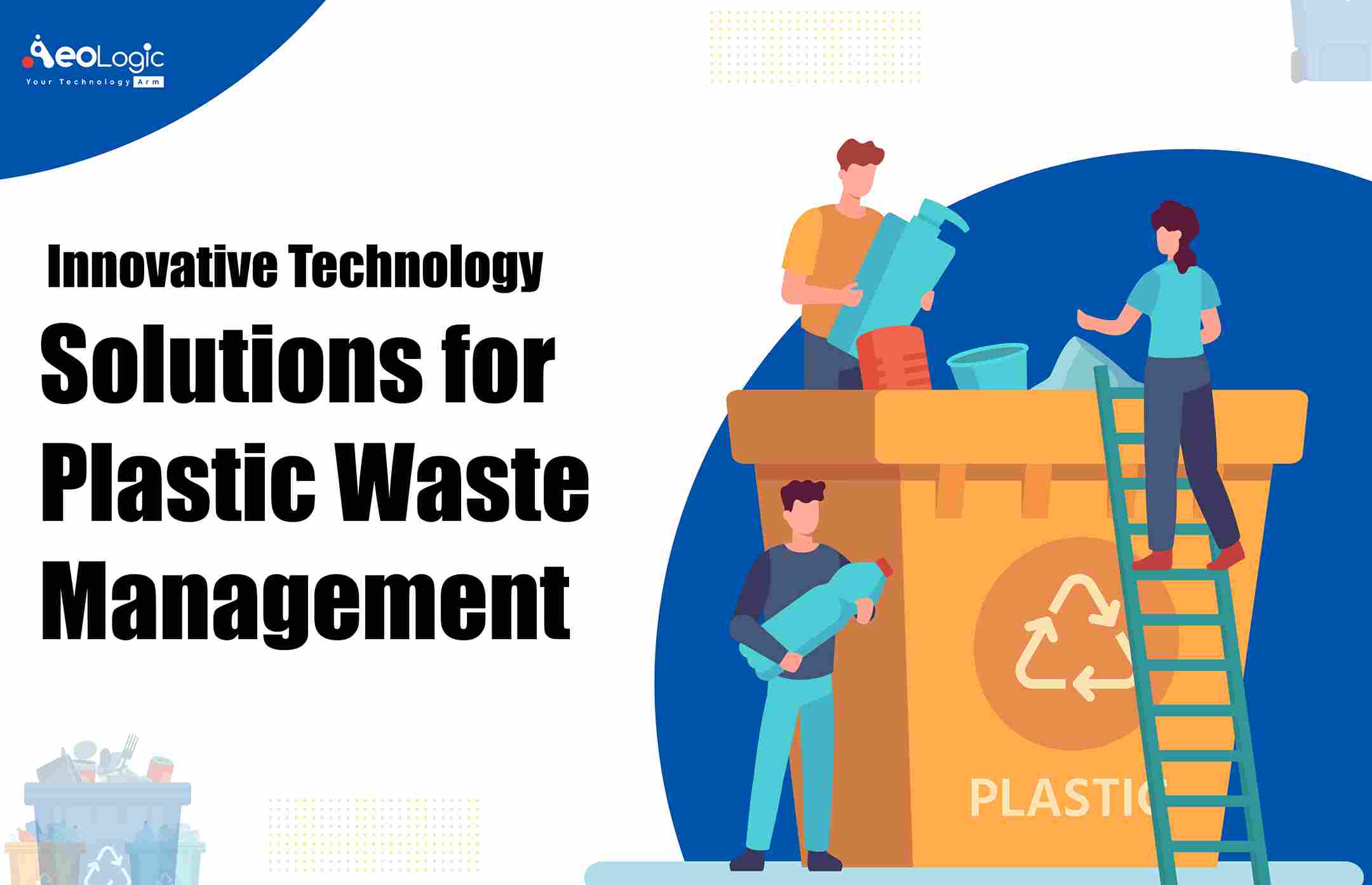A modern life without plastic demands would be pretty unimaginable. I mean, plastic is everywhere: the packaging materials, cups and bottles, and toys; the automobile parts, ships, satellites, trains, and space stations; or even glasses, watches, and your smartphone that use plastic components. However, with the help of technology solutions for plastic waste management, we can certainly reduce the high demand for plastic.
Nonetheless, this love for plastic is rather reasonable. You see, plastics are durable, lightweight, cheap, and can be molded, laminated, or even shaped as you wish. Furthermore, there is plastic suitable for almost any application. And even in some cases, it outperforms other materials. And because many plastics are durable and don’t corrode, they are creating significant disposal problems.
Also read: The Role of Technology in Sustainable Development
Eliminating the Plastic Pandemic
The seriousness of the plastic threat is well-observed now and several interventions have been created to contain, mitigate, and eliminate plastic pollution. For instance, Amazon and Flipkart — two of the largest e-commerce businesses in India are replacing all single-use plastic in their packaging with paper cushions following a directive from Prime Minister Narendra Modi, when he advised Indians to put an end to the usage of single-use plastic by 2022.
Innovative technology solutions for plastic waste management are helping to contain this plastic pandemic in a more holistic manner. To replace some plastics with natural substitutes; decrease the demand for new plastics; dispose of plastic-based goods; and collect and disposal of plastic waste.
Using Nanotechnology for Smart Packaging
Cardboard, paper, and other biodegradable products have long been used in the packaging of materials and one can cover cardboard with new water-resistant materials. In order to prevent leaks as well as protection from water splashes and rain. Nanotechnology is allowing such coatings to be made thinner and more cost-effective. The technology is also enabling the use of antimicrobial nano-materials directly on perishable products for protecting them from spoilage. Finnish paper and wood products company Koktamills, for instance, used nanotechnology for developing a new coating for paper cups that is completely recyclable and repulpable. It is different from those covered with a thin layer of plastic that’s a disaster for recycling companies.
Genetic Engineering of Natural Products
Single-use plastics, such as straws and polythene bags, are meant to be thrown out immediately after use. At least in cities, they are only given out upon request to discourage their use. However, the concern is deep-rooted and is requiring alternatives to cater to this consumption economy. Genetic engineering is facilitating many natural fibers, such as hemp, jute, and flax. In order to acquire properties that can expand their use from being used as textiles, fabrics, and currency to becoming better substitutes for plastics.
Also read: Digital Transformation Examples for Business Success
Creating Lightweight Aluminum and Steel
Researchers at Purdue University in the US have used nanotechnology for creating a super-strong aluminum alloy by changing the microstructure of aluminum. This high-strength, lightweight aluminum alloy with strength comparable to stainless steel would be revolutionizing the automobile and aerospace industries. Unlike plastics, they can also be easily reused and recycled into aluminum cups and bottles as well as metal foils for packaging and wrapping needs.
Chemical Recycling
Another Technology solutions for plastic waste management is Chemical recycling. It helps in breaking the plastic down at a molecular level, therefore, enabling the plastics to be recycled into useful materials. Some plastics, like polyolefins — the material in a polythene bag. These are burnt at higher temperatures using a thermal degradation process called ‘Pyrolysis’ to usually produce fuels and waxes.
Using Bio-Based Biodegradable Polymers
Polylactide (PLA) is a biodegradable polymer produced from lactic acid derived from sugar beets, corn, and sugar cane. It’s generally used in packaging industries, electronics, textiles, 3D printing, and biomedical applications. All thanks to its low toxicity and durability.
Using Catalysis to Biodegrade PET Plastic
PET (Polyethylene Terephthalate) is broadly used to produce plastic packaging. However, only about 15 percent is making its way to recycling plants. The inadequate infrastructure for collecting and sorting through discarded plastic remains a challenge. A start-up, Ioniqa, in the Netherlands, has developed a technology that is using a patented magnetic catalyst for breaking PET plastic down to the molecular level. Furthermore, Unilever has collaborated with the startup to fulfill its promise of creating all their plastics packaging reusable, recyclable, or compostable by the year 2025.
Also read: How Does Technology Help Sustainability
Final Thoughts
The article has stated several technology solutions for plastic waste management. Plastic is definitely useful, but we need to reset our association with it. In order to prevent the environmental damage, it can cause. Since plastic is a global problem, it demands a global solution. Therefore, we need to create an equilibrium with the use of plastics. The world can adapt to decrease and even eradicate plastic pollution, and this needs to be driven by collaboration between governments, businesses, and consumers.
Get in touch with us for a tailored digital transformation service for your business.
FAQs
What are the technology solutions for plastic waste management?
Four innovative ideas helping to fix the plastic problem
- The Circular Economy
- Refillables
- Redesigning packaging
- Improved recycling
How can new emerging technologies mitigate the effects of plastics on the environment?
Nanotechnology, advanced chemical processes, genetic engineering, and advanced engineering can make better natural substitutes for plastics and create plastics more biodegradable.










